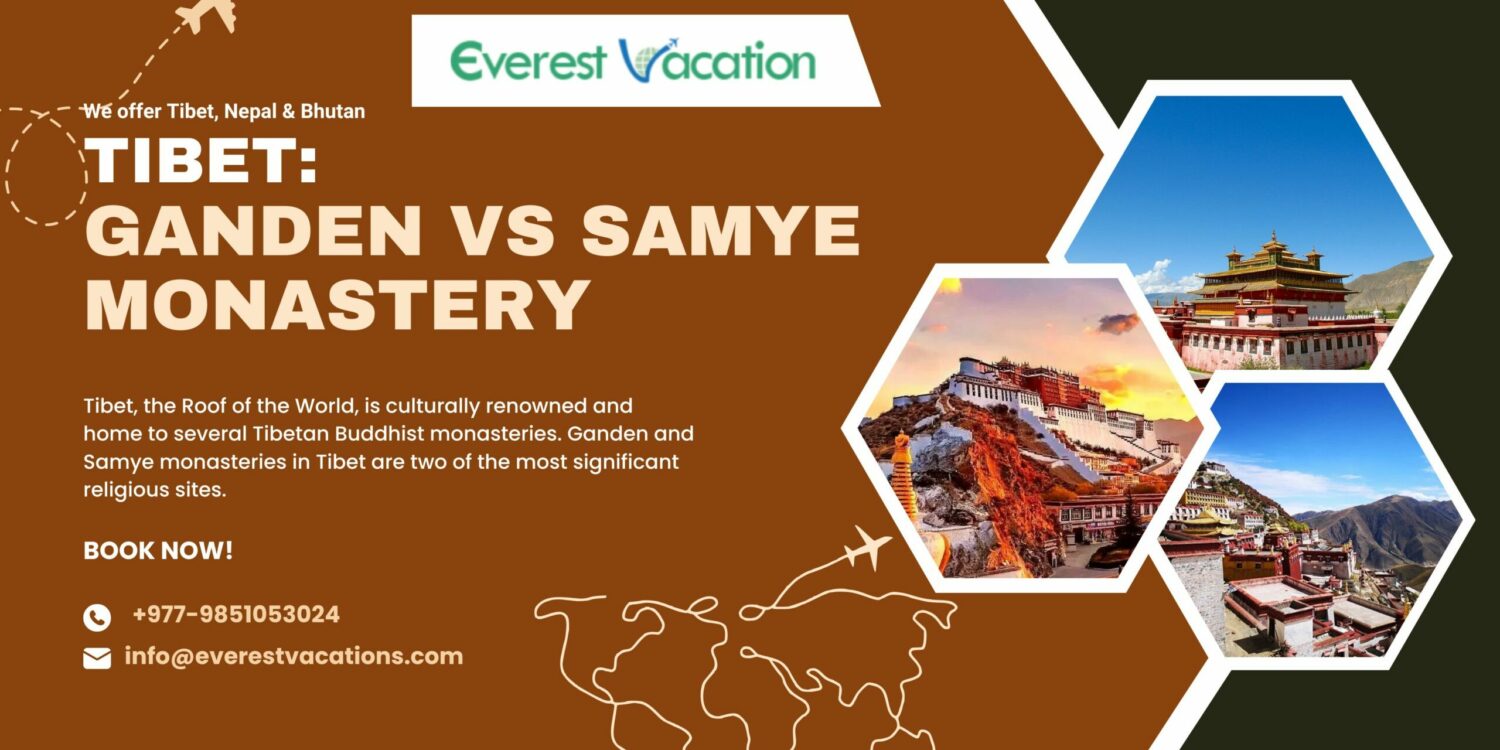Tibet and Bhutan are both phenomenal destinations to travel to as both are naturally beautiful with iconic landmarks, historical and cultural richness, impressive architecture, and unique traditional festivals. Tibet is fondly called ‘The Roof of the World’ while Bhutan is well-known as the ‘Land of Thunder Dragon’. Traveling is fun but more enjoyable when travel expenses are well-managed. Below is the article ‘Tour Cost Comparison between Tibet & Bhutan for 2026’ to provide you with a comprehensive guide to compare and make your travel plans easy and cost-effective.
Quick Chart: Tour Cost Comparison
| Factors | Tibet | Bhutan |
| Flight Cost | Expensive | Expensive |
| Luxury Accommodation | Reasonable | More Expensive |
| Meals | Reasonable | Reasonable |
| Transportation | Expensive | Reasonable |
| Permits and Fees | Reasonable | Expensive (SDF Fee) |
| Tour Guides | Reasonable (English-speaking) More Expensive (Other language speaking) | Reasonable (English-speaking) More Expensive (Other language speaking) |
| Group Size | Reasonable (Big Groups) | Reasonable |
| Shopping | More Reasonable | Reasonable |
Flight cost
Flight costs of both destinations Bhutan and Tibet are expensive considering the following factors:
- There are only two national carriers of Bhutan (Druk Air and Bhutan Airlines) that operate direct flights to 5 nations Nepal (Kathmandu), India (Delhi, Bagdogra, Gaya, Guwahati, and Kolkata), Thailand (Bangkok), Singapore (Singapore City), and Bangladesh (Dhaka). There are no connecting flights to Bhutan.
- There are direct international flights to Lhasa only from Kathmandu (Nepal) and China mainland (Chengdu/Beijing/other cities). There is only one daily direct flight from Kathmandu (Nepal) while numerous daily flights from China’s mainland cities.
- It takes 1 hour and 15 minutes to fly from Kathmandu to both destinations Tibet and Bhutan which is the shortest among other scheduled destinations. Other destinations’ flight durations may slightly vary with airlines and flight schedules.
Direct Paro (Bhutan) Flight Duration Chart
| Location | Flight Duration to Paro (Bhutan) |
| Kathmandu, Nepal | 1 hour 15 minutes |
| New Delhi, India | 1 hour 45 minutes |
| Bagdogra, India | 1 hour 30 minutes |
| Gaya, India | 2 hours |
| Guwahati, India | 1 hour 45 minutes |
| Kolkata, India | 1 hour 30 minutes |
| Dhaka, Bangladesh | 1 hour 45 minutes |
| Bangkok, Thailand | 3 hours 30 minutes |
| Singapore City, Singapore | 5 hours 15 minutes |
(Note: Flight duration may vary due to weather, flight paths, and air traffic.)
Direct Lhasa (Tibet) Flight Duration Chart
| Location | Flight Duration to Lhasa (Tibet) |
| Kathmandu (Nepal) *It is onlyone international air-route for direct flight to Lhasa(Tibet) | 1 hour 15 minutes |
| Beijing (China) | 4 hours 30 minutes |
| Chengdu (China) | 2 hours 30 minutes |
| Guangzhou (China) | 4 hours 45 minutes |
| Kunming (China) | 3 hours 45 minutes |
| Shanghai (China) | 5 hours 30 minutes |
| Xian (China) | 3 hours 15 minutes |
(Note: Flight duration may vary due to weather, flight paths, and air traffic.)
Accommodation
Tibet is reasonable when it comes to accommodation as compared to Bhutan. Tibet has mostly basic to luxury hotels whose costs are cheaper to slightly expensive depending on comfort and variety of services.
Bhutan has normal hotels to several luxury hotels (4-star, & 5-star). The normal hotels are basic but provide comfortable facilities and are reasonable. On the other hand, luxury hotels are well-equipped with high-end facilities ensuring top-notch comfort to the clients. These luxury hotels are so expensive that a night stay can cost around USD 1000.
Meals
Both destinations, Tibet and Bhutan are reasonable in meals and offer a variety of meals including local, regional, and continental dishes. The local and mid-range meal costs are average in both destinations. Fine dining at top-notch restaurants is slightly expensive in Bhutan as compared to Tibet.
Transportation
Tibet is expensive compared to Bhutan when it comes to transportation. It is because of the government policy of Tibet that transportation costs are slightly expensive (especially for a solo traveler or small number of travelers). For tours in both destinations, private vehicles are used which are comfortable.
Permits and Fees
Bhutan is expensive as visitors are required to pay a daily Sustainable Development Fee (SDF). This fee is imposed by the Bhutan government and is under the nation’s policy for the development of the country. However, the monument and permit fees in both destinations Tibet and Bhutan are reasonable and may cost below USD 20 for each monuments.
New Revised SDF effective from September 1, 2023, until September 2027 (Bhutan)
- Adults: USD 100 per person per night
- Children (below 6): No SDF required
- Children aged (6 to 11): 50% discount on SDF i.e. USD 50 per night
- Children aged (12 and above): Full SDF rate applies i.e. USD 100 per person/ night
Tour Guides
English-speaking guides are reasonable and other language-speaking guides (French, Spanish, etc.) are more expensive in both destinations Tibet and Bhutan. Tour guides in both destinations are professional and speak fluently.
Group Size
Traveling with big group sizes in Tibet is reasonable (due to sharing transportation) while traveling to Bhutan in all group sizes is overall reasonable. Private vehicles are used for transportation which is comfortable.
Shopping
Tibet is slightly reasonable for shopping than Bhutan. There is a greater variety of local goods available in Tibet for shopping as compared to Bhutan. Note that most of the items are imported in both nations.
Conclusion
Both destinations Bhutan and Tibet are incredibly fabulous and must be explored. The cost of different factors (flight, accommodation, meals, transport, etc.) may hold back from traveling. But our comprehensive list will help you to plan your tours more wisely managing the expenses. So, what’s waiting for? Start planning to create unforgettable memories in both mesmerizing destinations.



